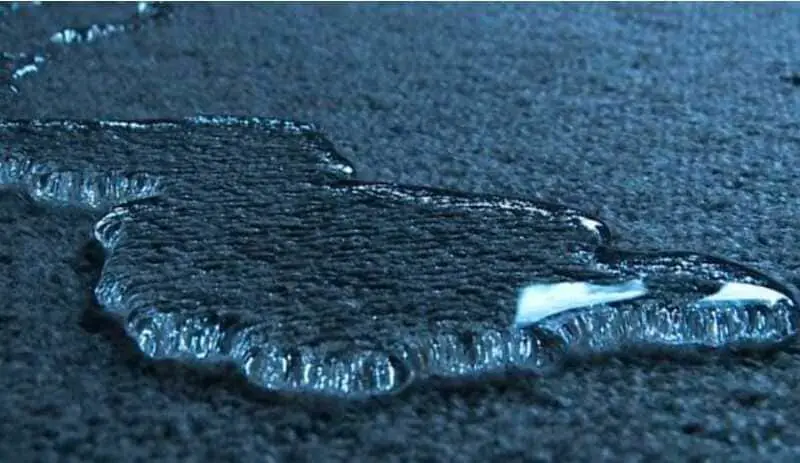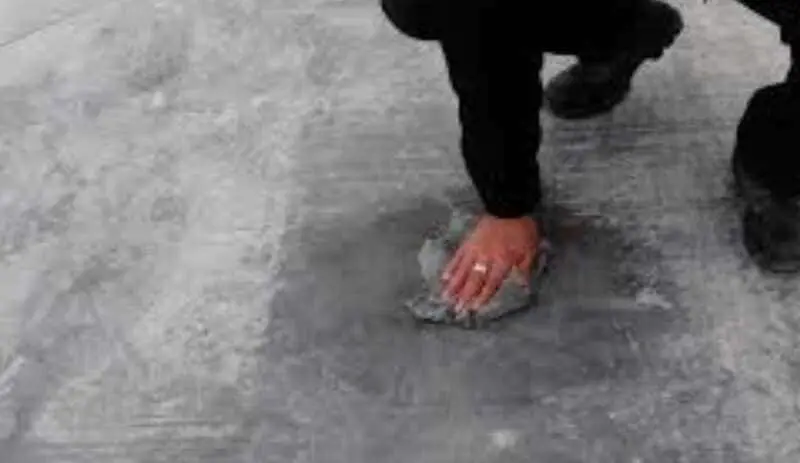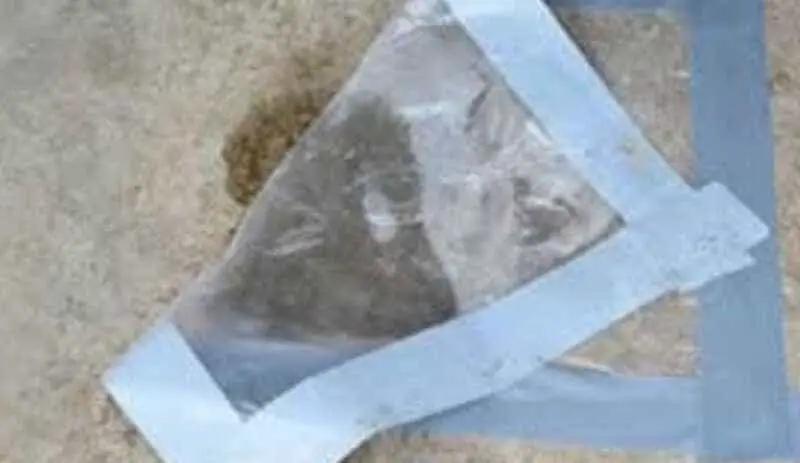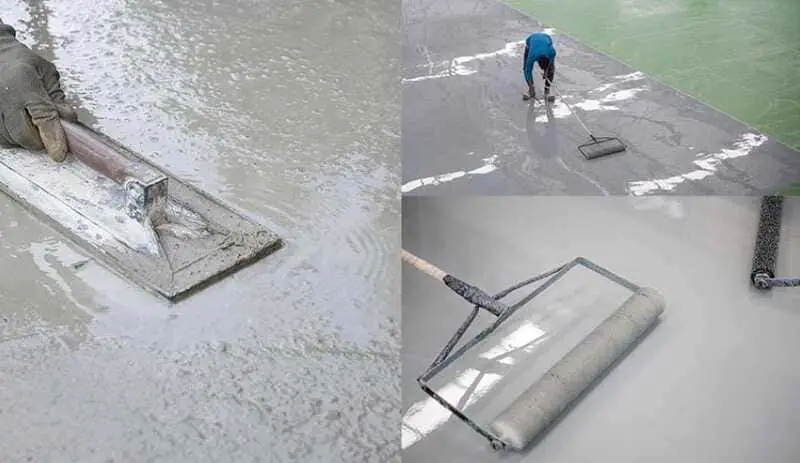Moisture in homes is a common problem that can have serious consequences on people’s health and the structural integrity of the house. One of the most common symptoms of the presence of moisture is sweating on concrete floors under the carpet.
This problem can be of particular concern because, in addition to being unsightly, it can contribute to the growth of mold and other organisms detrimental to human health.

In this article, we will explore why concrete flooring sweats under carpet and what steps can be taken to prevent and treat this problem. From the causes of floor sweating to best practices for installing carpet, this article will provide valuable information for those struggling with moisture in their homes.
What is floor moisture and why can it cause problems in the home?
In order to understand why concrete floors, sweat under carpet we must first know what floor moisture is. Soil moisture is the amount of water found in the soil. In a home, moisture can come from a variety of sources, such as water leaks, condensation and evaporation. This moisture can be especially problematic in the concrete floor under carpet, as the lack of ventilation and the presence of organic materials in the carpet can create an environment conducive to the growth of microorganisms that are harmful to health.
When the concrete floor is wet, moisture can rise through the material and condense on the surface of the carpet, causing it to sweat and feel damp to the touch. In addition to being unsightly, this sweat can contribute to mold and other organisms that can trigger health problems such as allergies and asthma.
It is important to understand that moisture on the floor is not only an aesthetic problem, but can also have serious consequences for the integrity of the home’s structure. Moisture can weaken foundations and wood structures, which can lead to major damage and costly repairs.
Why do concrete floors sweat and what factors can contribute to this problem?
Sweating concrete floors can be a common problem in many homes. This occurs when the surface of the concrete floor becomes damp and sweats, which can be of particular concern in areas where carpeting is present. There are several possible causes of concrete floor sweating, including factors such as moisture in the air, lack of ventilation and condensation.
When the humidity in the air is high, the concrete floor can absorb this moisture and cause sweating. Lack of ventilation in the area can also contribute to concrete floor sweating, as moist air cannot escape and accumulates below the floor surface. On the other hand, when the temperature in the area changes, air can condense on the floor surface, which can also contribute to the sweating problem.

However, the main cause of concrete floor sweating is the presence of moisture in the subfloor. If there is groundwater near the ground surface, it can penetrate through the concrete material and cause the surface to sweat. This can be of particular concern in areas where carpet is located, as the moisture can damage the carpet and provide an ideal environment for the growth of mold and other health-damaging organisms.
The effects of moisture on human health and how to prevent them.
Moisture can be a common problem in many homes and can have detrimental effects on human health. Why does the concrete floor sweat under the carpet can be a sign of excessive moisture in the home, which can lead to health problems such as allergies, asthma and other respiratory disorders.
When humidity is high, it can encourage the growth of mold and other organisms that can be detrimental to health. In addition, humidity can also attract dust mites, which can trigger allergic reactions. These mites can also proliferate in damp carpets, which can be especially problematic in areas where the concrete floor sweats under the carpet.
To prevent the detrimental effects of moisture on human health, it is important to control moisture in the home. This can be accomplished by installing adequate ventilation, such as exhaust fans or ventilators, and eliminating any sources of moisture, such as water leaks. In addition, maintaining a proper temperature in the home and ensuring adequate air circulation can also help prevent concrete floor sweating.
Other preventative measures include regular carpet cleaning and removing any stains or liquid spills immediately to avoid moisture buildup. It is also important to maintain adequate relative humidity in the home, as too much or too little can be detrimental to health.
How to detect moisture in concrete floors and carpet?
Early detection of moisture in concrete floors and carpet is important to prevent health problems and damage to the home. Why concrete floors sweat under carpet is a common sign of excessive moisture, but there are other signs to look for.
In carpet, moisture can be detected through damp or musty spots, or a musty or moldy odor. If the carpet feels damp to the touch, it is a clear indication that there is a buildup of moisture underneath. The appearance of mold on the walls near the carpet can also be a sign of moisture.
To detect moisture in the concrete floor, a simple test can be performed by placing a plastic sheet over the floor and sealing the edges. If after a few days there is condensation on the underside of the sheet, it is a sign that the floor is sweating and there is excess moisture.

In addition to these signs, it is also important to watch for other problems such as the presence of insects or dust mites, which can proliferate in damp areas. Peeling paint on walls near the carpet can also be a sign of excessive moisture.
If moisture is suspected in the carpet or concrete floor, it is important to act quickly to prevent further problems. This may involve eliminating any sources of moisture, such as a water leak, and installing proper ventilation in the affected room. In addition, it is important to regularly clean the carpet and concrete floor to prevent moisture buildup and the growth of mold, mildew and other organisms.
How to prevent moisture on concrete floors before installing carpet?
Before installing carpet on a concrete floor, it is important to take preventative measures to avoid moisture problems. Sweating of the concrete floor under the carpet is a common problem that can cause damage to the carpet and to the health of the people living in the home.
One way to prevent moisture on concrete floors is to make sure the floor is completely dry before installing carpet. This means waiting at least 48 hours after cleaning the floor and after any rain before installing the carpet. It is also important to make sure there are no water leaks in the basement or lower level of the house, as this can cause moisture buildup in the concrete floor.
Another way to prevent moisture in concrete floors is through the installation of a sealer or waterproofing coating on the floor prior to carpet installation. These products can help prevent moisture buildup and reduce the risk of concrete floor sweating.

It is also important to ensure that there is adequate ventilation in the room where the carpet will be installed. This may include installing fans or opening windows to allow air circulation. Adequate ventilation can help prevent moisture buildup on the concrete floor.
Short and long term solutions to the problem of moisture in concrete floors.
Moisture in concrete floors can be an annoying and persistent problem in the home. Fortunately, there are both short-term and long-term solutions that can help solve this problem.
For a short-term solution, it is possible to use dehumidifiers to reduce moisture in the air. This can help prevent condensation on the concrete floor and reduce the amount of moisture in the room. In addition, fans can be used and windows can be opened to allow better air circulation.
However, for a long-term solution, the root cause of the moisture problem needs to be identified and addressed. This may include repairing leaky pipes, installing drainage systems or correcting ventilation problems in the home. In some cases, it may be necessary to replace damaged concrete flooring or add a waterproofing sealant or coating to prevent future moisture problems.
Another long-term solution is to install a waterproofing system in the foundation of the home. This can help prevent groundwater from entering and significantly reduce moisture problems in concrete floors.
Best practices for installing carpet over concrete floors.
Installing carpet over concrete floors can be an excellent option for improving the appearance and comfort of a room. However, it is important to follow some best practices to ensure a successful installation and avoid moisture problems.
Before installing carpet, it is important to make sure the concrete floor is completely dry. If there are signs of moisture, such as water stains or condensation, the cause of the problem needs to be identified and addressed before proceeding with the installation.
In addition, it is recommended that a vapor barrier be installed between the carpet and the concrete floor. This can help prevent moisture from entering the carpet and reduce the risk of mold problems or damage to the concrete floor.
Before installing the carpet, it is also important to perform a proper cleaning of the concrete floor. This may include using a specific floor cleaner to remove dirt and grease from the floor. In addition, it is important to make sure that the floor is level and free of any imperfections that may affect the installation of the carpet.
During installation, it is important to make sure that the carpet is stretched correctly and fits properly to the concrete floor. This can help prevent wrinkles and bulges in the carpet and ensure a smooth, even installation.
How to treat and prevent mold and other moisture-related problems in the home.
Moisture in the home can cause a number of problems, including mold growth, damage to paint and wallpaper, and a decrease in air quality. To treat and prevent these problems, it is important to follow a few tips and effective practices.
First, it is important to maintain good ventilation in the home. This may include opening windows and doors to allow air to circulate, or installing a mechanical ventilation system to exhaust moist air. It is also important to maintain an appropriate temperature in the home, as humidity can increase in rooms that are too warm.
Another way to prevent dampness is to reduce the amount of water in the home. This may include fixing plumbing leaks, installing a dehumidifier to remove excess moisture in the air, and regularly cleaning and drying damp areas, such as the bathroom and kitchen.
If mold is detected in the home, it is important to treat it immediately to prevent its spread. This may include cleaning the surface with a bleach and water solution, or hiring a professional to treat the problem. It is also important to identify and address the underlying cause of the moisture problem, such as a leak or inadequate ventilation.
Finally, it is important to maintain good hygiene in the home to prevent the spread of bacteria and mold. This may include regular cleaning of surfaces and proper disposal of waste. It is also important to regularly monitor problem areas, such as the bathroom and kitchen, to quickly detect and treat any signs of moisture or mold.
How to maintain indoor air quality in homes affected by moisture.
Moisture in the home can not only cause structural and health problems, but can also affect indoor air quality. To maintain good air quality in homes affected by moisture, it is important to take specific steps.
First, it is important to maintain good ventilation in the home. This may include opening windows and doors to allow air to circulate, or installing a mechanical ventilation system to exhaust moist air. It is also important to maintain an appropriate temperature in the home, as humidity can increase in rooms that are too warm.
Another way to maintain air quality is to reduce the amount of water in the home. This can include fixing plumbing leaks, installing a dehumidifier to remove excess moisture in the air, and regularly cleaning and drying damp areas, such as the bathroom and kitchen. It is also important to regularly clean air conditioning and heating filters, as they can accumulate dust and other contaminants.
In addition, it is important to use cleaning products that do not emit volatile organic compounds (VOCs), which can contribute to indoor air pollution. Instead, natural cleaning products, such as vinegar and baking soda, or specific cleaning products for people with chemical sensitivities, can be used.
Finally, houseplants can be used to improve indoor air quality. Some plants, such as spiderwort and Boston fern, are especially effective at filtering common indoor air pollutants.
The financial implications of addressing the moisture problem in concrete floors.
The problem of moisture in concrete floors can have significant financial implications for homeowners and commercial building owners. First, the cost of treating the problem can vary considerably depending on the extent of the damage and the magnitude of the problem.
In some cases, it may be necessary to install a drainage system, repair cracks in the concrete and apply a sealant to prevent water from penetrating inside. These repairs can be costly, especially if they require the hiring of a professional who specializes in moisture repair.
In addition, the moisture problem can damage building materials, which can result in costly replacements or repairs. If moisture has penetrated the building structure, it can damage wood, plaster and other building materials, which can increase the cost of repairs.
The moisture problem can also have long-term financial implications. If moisture is not properly treated, it can lead to health problems, such as mold, which can increase medical costs and reduce the value of the property. In addition, it can result in higher heating and cooling costs, as moisture increases the load on heating and cooling systems, which can increase energy costs.
